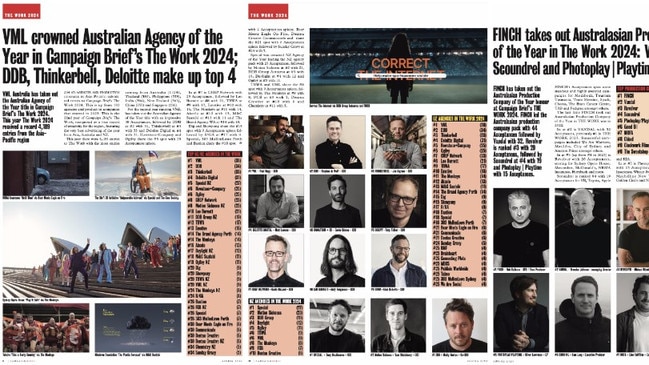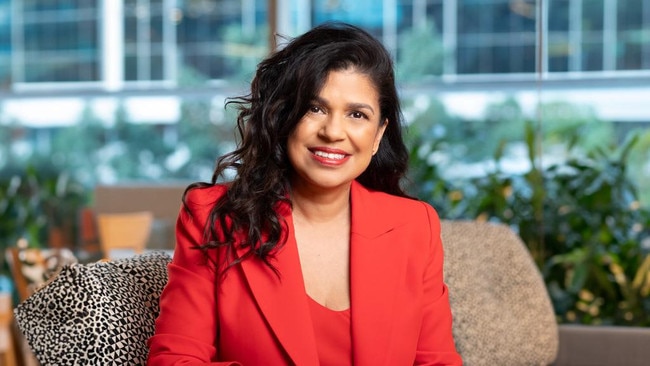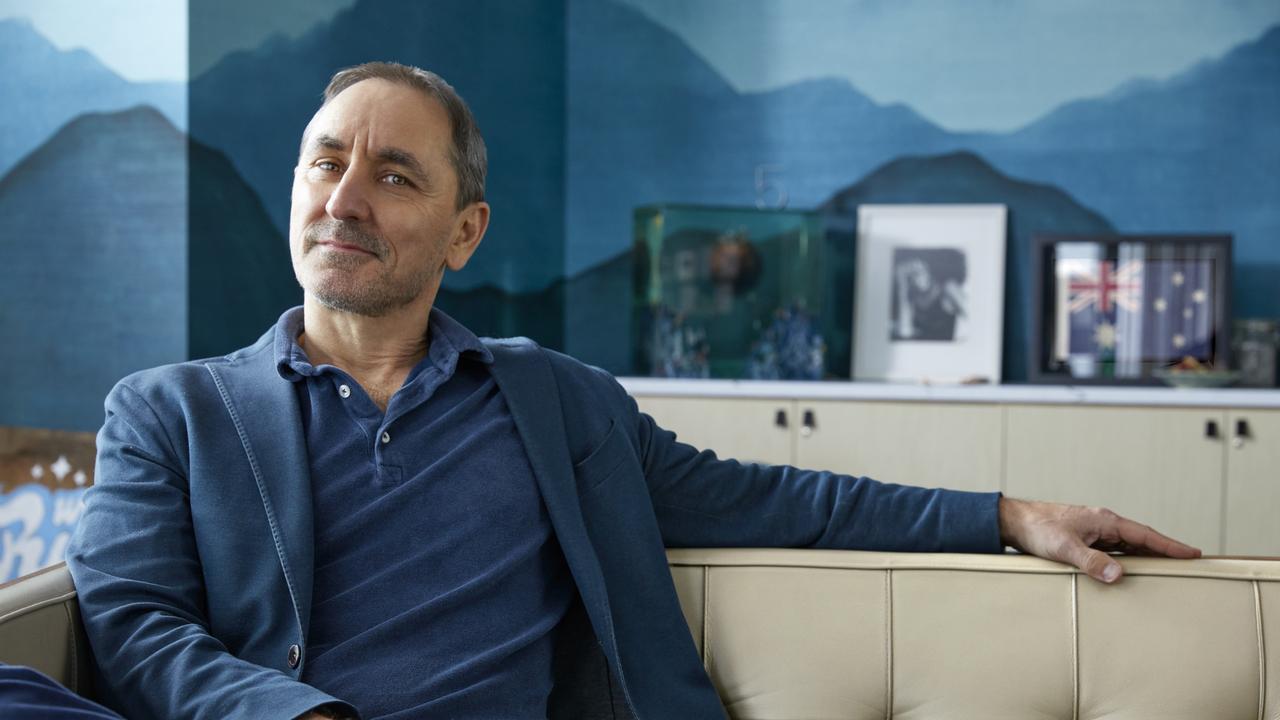Advertising’s gender representation debate heats up as agencies boycott trade title
Gender representation in the advertising industry is in the spotlight again as agencies threaten to boycott a trade publication.

A photo of a double-page spread from a feature article on creative leaders that featured photos of 20 men and no women has ignited an industry-wide debate about gender representation in the advertising industry.
The feature from trade publication Campaign Brief sparked international backlash when it went viral sparking debate about male-dominated creative departments and its impact on the marketing and advertising.
The subsequent debate has broadened to target the publication’s policy of allowing anonymous comments on its website, which many allege has enabled a culture of sexist bullying and harmful commentary against individuals and the industry.
The longstanding issue, which was covered by The Australian in 2006, combined with recent events has led to calls for advertising agencies and production companies to join a coalition of creative companies poised to announce boycotts of the publication.
The Australian understands high-level discussions are taking place throughout the industry as agencies consider their positions. The Australian spoke to a number of agency chief executives who confirmed discussions were taking place across the industry, with one agency leader telling saying: “I’m ashamed that we didn’t do it sooner.”
Last week The Clemenger Group of agencies, which includes Clemenger BBDO, CHEP, Colenso BBDO, Traffik, Redhanded Agency and Clemenger UnLTD, announced they had cancelled their subscription and severed ties with the publication.
Campaign Brief owner and publisher Michael Lynch defended the feature and argued it was reflective of the advertising industry.
He told The Growth Agenda: “Unfortunately the list exposes the uncomfortable truth that the majority of agencies have male chief creative officers (CCO).
“It’s just the facts. We’re not for or against anything.
“Even the female CEOs, tragically, then go and employ a male CCO.
“If you walk into an agency, you will see no other males outside the creative department. It’s almost like that.
“You’ll find women in media production, you’ll find suits, more than half the CEOs of agencies are women, hardly any men on the client side, except the odd guy like Brent. You find most marketers are women.
“The only place you’ll find the men is in the creative department.”
In a bid to address the issue, the publication has issued an apology and announced it would no longer publish anonymous comments on the site.
However, the debate has once again put the spotlight of the issue of representation in the advertising industry.
According to the Advertising Council of Australia, while women account for 42 per cent of senior management positions within advertising agencies, “underrepresentation persists in senior creative positions”.
A statement from Advertising Council of Australia chief executive Tony Hale said: “It is immensely disappointing that we still need to have this discussion.
“It has long been established that diversity and inclusion have been ongoing challenges for Australian advertising and if we are to ensure the long-term prosperity of the industry, we all have a role to create change. And that means everyone.”

According to Sunita Gloster, non executive director and chair of the Diversity Council Australia, the imperative on agencies to get it right was crucial due to the impact on brands and culture.
“As an industry, we stand tall in our reputation as growth drivers and influencers of culture,” she said.
“Our opportunity is to lead the way to acknowledge, accelerate and improve the diversity of our workforce and create environments where people in all their diversity can thrive. The floodlights are back on but what must remain is the constant scrutiny of the link between who we are and what we create. Biases within our industry have a destructive ripple effect across society.
“Ultimately, it may be advertisers who hold the sledgehammer to accelerate necessary change within the industry, leveraging their spending power to enforce their own diversity and inclusion values and commitments across their supply chain. It’s an age-old strategy: when money talks, everything else walks.”
Ms Gloster’s comments echo numerous research studies; such as a McKinsey study which found diverse businesses were 36 per cent more profitable than less diverse businesses, and a Harvard Business Review study which revealed that diverse sales teams had 45 per cent more growth in market shares and were 70 per cent more likely to reach a new market.
Agency leaders agree the issue is nuanced and requires significant work to overcome.
Pauly Grant, chief talent officer, at Publicis Groupe APAC & ANZ, said work was required on a number of levels.
“We need to continue to provide tools and education to female creatives to build their confidence and their voices,” she said.
“We also need to disrupt current recruitment practices. We’re supporting more equitable hiring practices through local initiatives like the Part-Time Pitch by Mums in Ads, which encourages discussions about part-time roles.
“In our industry, often we rely too heavily on the people who are most impacted by the problem that needs solving.
“But we need everyone, regardless of gender, to drive change, and be more vocal allies and champions of female creatives. Within our Australian creative agencies, we have a representation of people identifying as 47.5 per cent female, 41.5 per cent male and 11 per cent other.
“Meanwhile, 60 per cent of our creative agency leaders are female. But like many, our senior creative representation continues to be a challenge – which we are actively addressing.
“The encouraging news is that we are seeing a generational shift in gender balance, with millennial and Gen Z females representing 52 per cent of our creative people; reflecting our commitment to changing the overall diverse representations within our agencies.”
Rose Herceg, president of WPP Australia and New Zealand said: “As a leader in Australian advertising, we’re committed to playing our part to build and foster an equitable and inclusive industry.
“Gender diversity plays a key part in this and if we want our business and the wider industry to be successful, we need to ensure we have the best talent, from diverse backgrounds, thriving in a supportive environment that enables our people to grow and become their best.”


